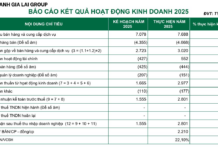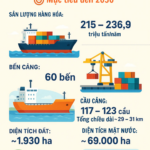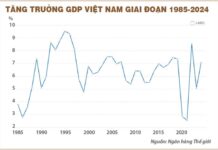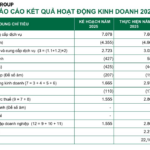Phuoc An Bridge Accelerates Construction, Surpassing Schedule by 6 Months
After more than a year and a half of construction, the Phuoc An Bridge—a national key transportation project spanning the Thi Vai River—is entering an accelerated phase, aiming for technical completion by the end of 2026, six months ahead of schedule. The project is poised to become a strategic link in the logistics, seaport, and industrial network of the entire Southeast region.
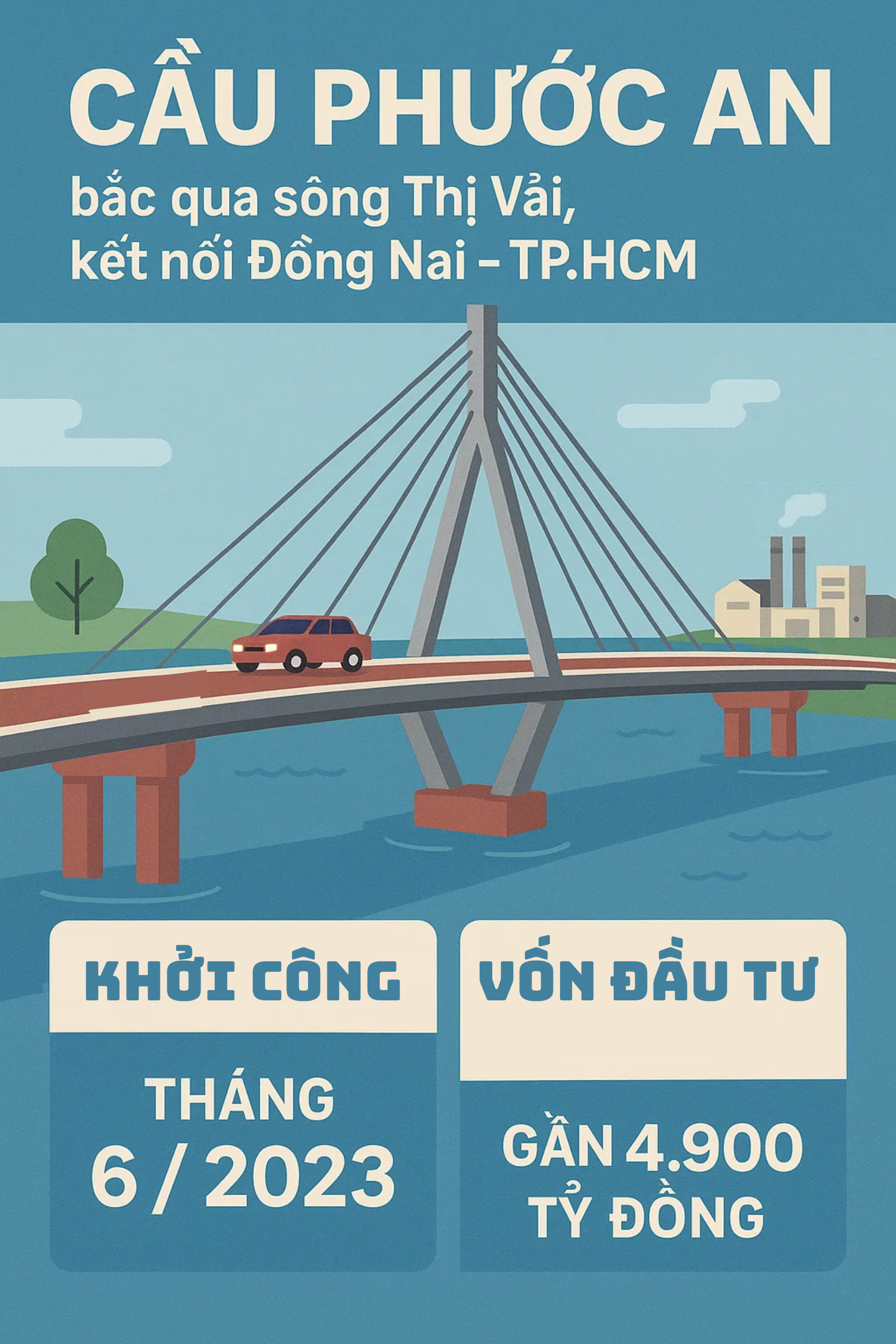
Launched in June 2023, the Phuoc An Bridge has a total investment of 4.9 trillion VND and spans 4.4 km, with the main bridge crossing the Thi Vai River extending over 3.5 km. This vital route connects Dong Nai with Ho Chi Minh City, linking the Cai Mep – Thi Vai port cluster with the Ben Luc – Long Thanh, Bien Hoa – Vung Tau highways, and the future Long Thanh Airport.
Currently, over 350 engineers and workers are continuously operating on 10 fronts, divided into five major packages along both banks of Dong Nai and Ho Chi Minh City. Critical components such as foundations, pier bodies, D1200–D1500 piles, and Extradosed beams are progressing 15% ahead of schedule. Heavy-duty cranes with capacities of 250–350 tons are deployed to facilitate the assembly of structural spans and material transport along international shipping lanes.
The Phuoc An Bridge employs Extradosed technology—one of the world’s most advanced bridge techniques—combining the strengths of box girder and cable-stayed bridges. The main span, measuring 250 meters, is the longest in Southeast Asia, featuring 48 cable bundles arranged in two fan-shaped planes to enhance load-bearing capacity and aesthetic appeal.
The two main piers, standing nearly 116 meters tall, are designed in a “water droplet” shape, optimizing aerodynamics and serving as architectural landmarks for the entire route. The foundation system comprises 36 piles drilled over 60 meters deep, constructed under harsh conditions in a deep river mouth with heavy vessel traffic.
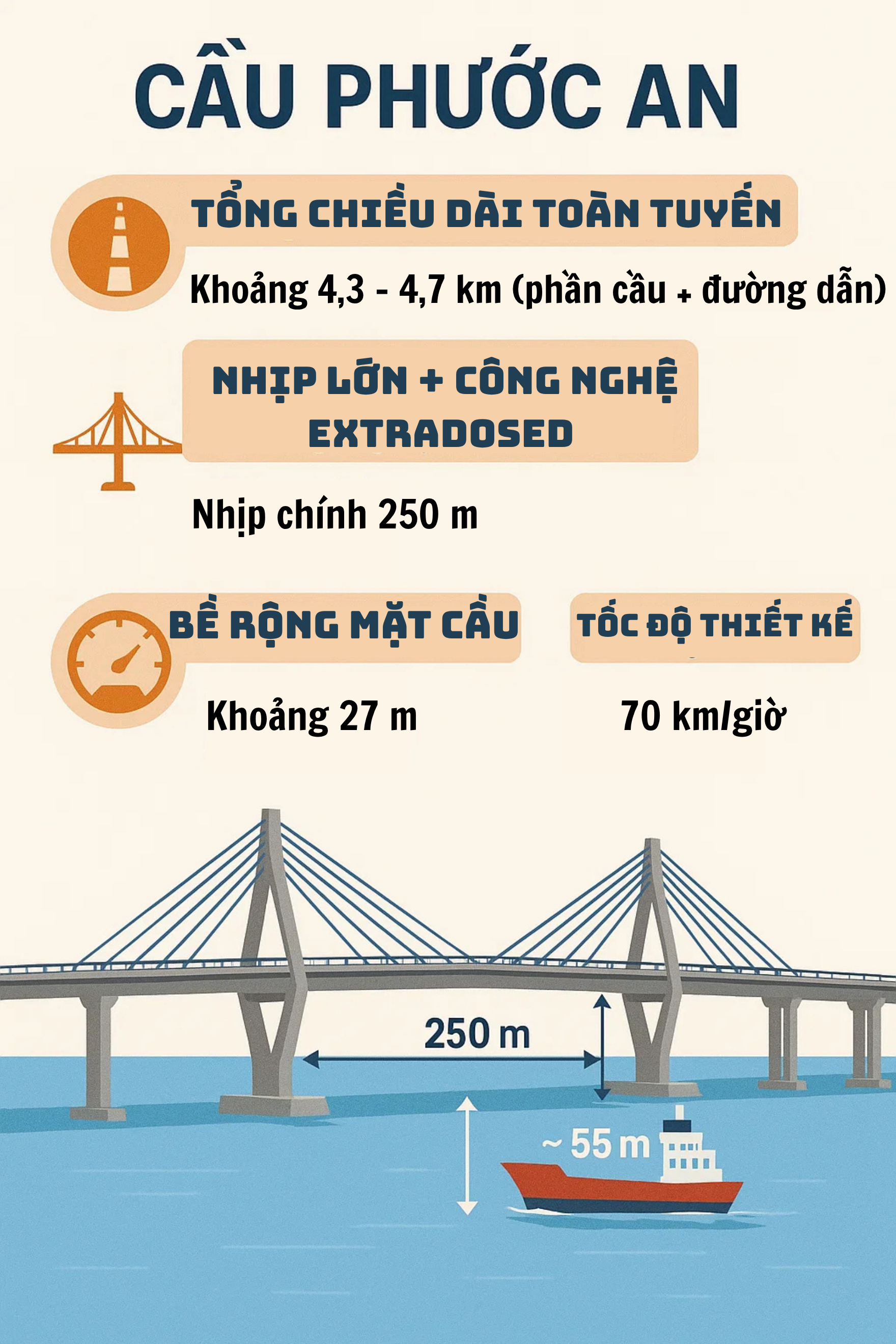
The Bridge with Southeast Asia’s Longest Main Span
The Phuoc An Bridge’s 250-meter main span not only signifies a technical leap but also elevates the infrastructure status of the Southeast region. Utilizing advanced Extradosed technology, the bridge is hailed as a new-generation symbol of the leading economic zone, home to Vietnam’s largest industrial, seaport, and logistics hubs.
A standout feature is its unique architectural design, with two nearly 116-meter-tall main piers shaped like “water droplets,” blending elegance and strength in a large-scale river-crossing structure.

The nearly 5-trillion VND Phuoc An Bridge gradually connects Dong Nai and Ho Chi Minh City. Photo: Construction Newspaper
This rare architectural style in Southeast Asia contributes to a modern infrastructure landscape, establishing a new identity for the Cai Mep – Thi Vai deep-water port cluster. Upon completion, the bridge will become a high-recognition urban and seaport symbol, boosting brand promotion and investment in the industrial and logistics sectors.
Beyond aesthetics, the 250-meter span holds strategic importance for Vietnam’s maritime transport system. Its wide clearance accommodates large vessels, particularly 20,000–30,000 TEU container ships accessing the rapidly growing Cai Mep – Thi Vai port. The extended span minimizes maritime accident risks in the complex, high-traffic international waterway.
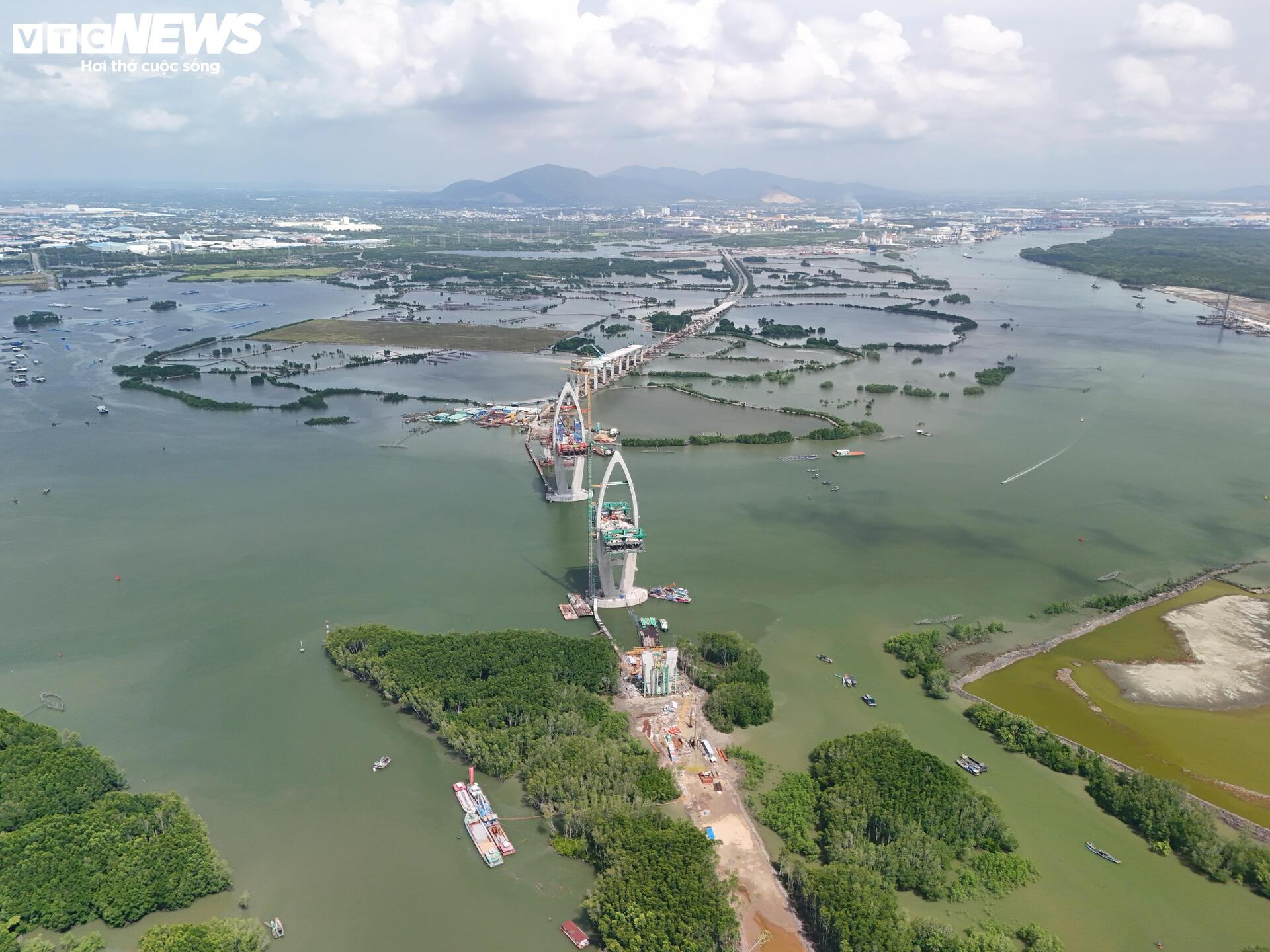
After over two years of construction, the Phuoc An Bridge project across the Thi Vai River connecting Ho Chi Minh City and Dong Nai has completed several key components. Photo: VTC News
Designed to accommodate future generations of ultra-large vessels, the bridge prevents the “low bridge–high port” issue that has caused congestion and costly upgrades in other nations. Thus, the Phuoc An Bridge is pivotal in developing an internationally competitive deep-water port, helping Vietnam maintain its edge against regional logistics hubs like Singapore, Malaysia, and Thailand.
With its exceptional architectural, technical, and strategic value, the Phuoc An Bridge sets a new standard for major infrastructure projects in Vietnam. More than a transportation link, it symbolizes the robust and sustainable development aspirations of the Southeast region—a dynamic economic leader in its new phase.
From July 1, 2025, following provincial mergers, Vietnam will have 34 provinces and cities. Ho Chi Minh City will lead economically with a GRDP of 2,715,782 billion VND, followed by Hanoi with 1,425,521 billion VND. Hai Phong ranks third with 658,381 billion VND, Dong Nai fourth with 609,176 billion VND, and Bac Ninh fifth with 439,776 billion VND.
Thai Ha
$3 Billion Highway Cutting Through Ho Chi Minh City’s Swamplands Nears Completion
After years of development, the 991B Road project—a vital transportation artery linking National Highway 51 to the downstream Cai Mep Port—is now entering its final, critical phase.
Revolutionary Sea Bridge Project Connecting Can Gio and Vung Tau Announced by Ministry of Construction
Voters in Ho Chi Minh City are urging the government to expedite investments in developing the Cai Mep – Thi Vai port into an international transshipment hub. Additionally, they advocate for the construction of the Can Gio – Vung Tau bridge and a high-speed railway connecting Ho Chi Minh City, Ba Ria, and Binh Duong. These initiatives aim to leverage enhanced transportation connectivity, bolstering export-import activities and logistics services.











